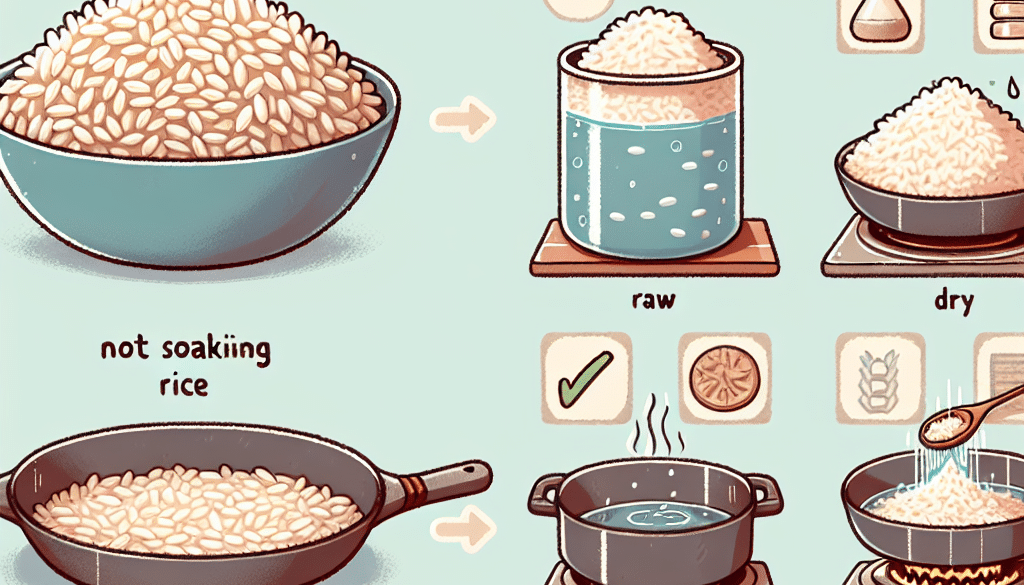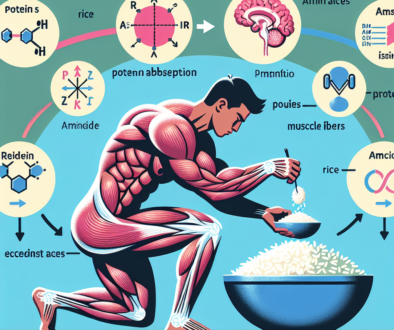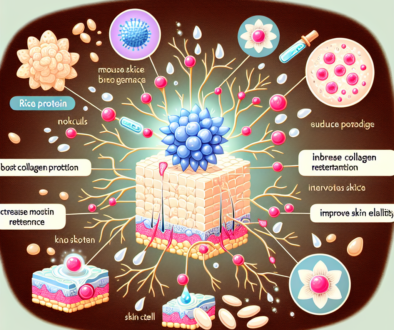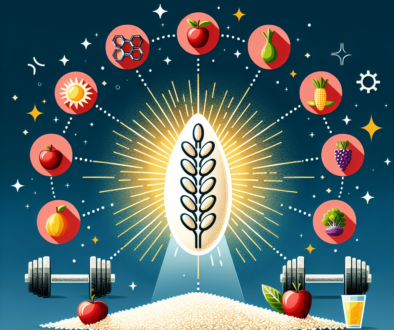What Happens If You Don’t Soak Glutinous Rice?
-
Table of Contents
- Glutinous Rice Preparation: The Impact of Skipping the Soaking Process
- Understanding Glutinous Rice
- The Traditional Soaking Process
- Skipping the Soak: Potential Outcomes
- 1. Hard and Unevenly Cooked Grains
- 2. Longer Cooking Time
- 3. Digestive Issues
- 4. Altered Taste and Texture
- Case Studies and Examples
- Soaking Alternatives and Tips
- Conclusion: The Importance of Soaking Glutinous Rice
- Enhance Your Diet with ETprotein’s High-Quality Protein Products
Glutinous Rice Preparation: The Impact of Skipping the Soaking Process
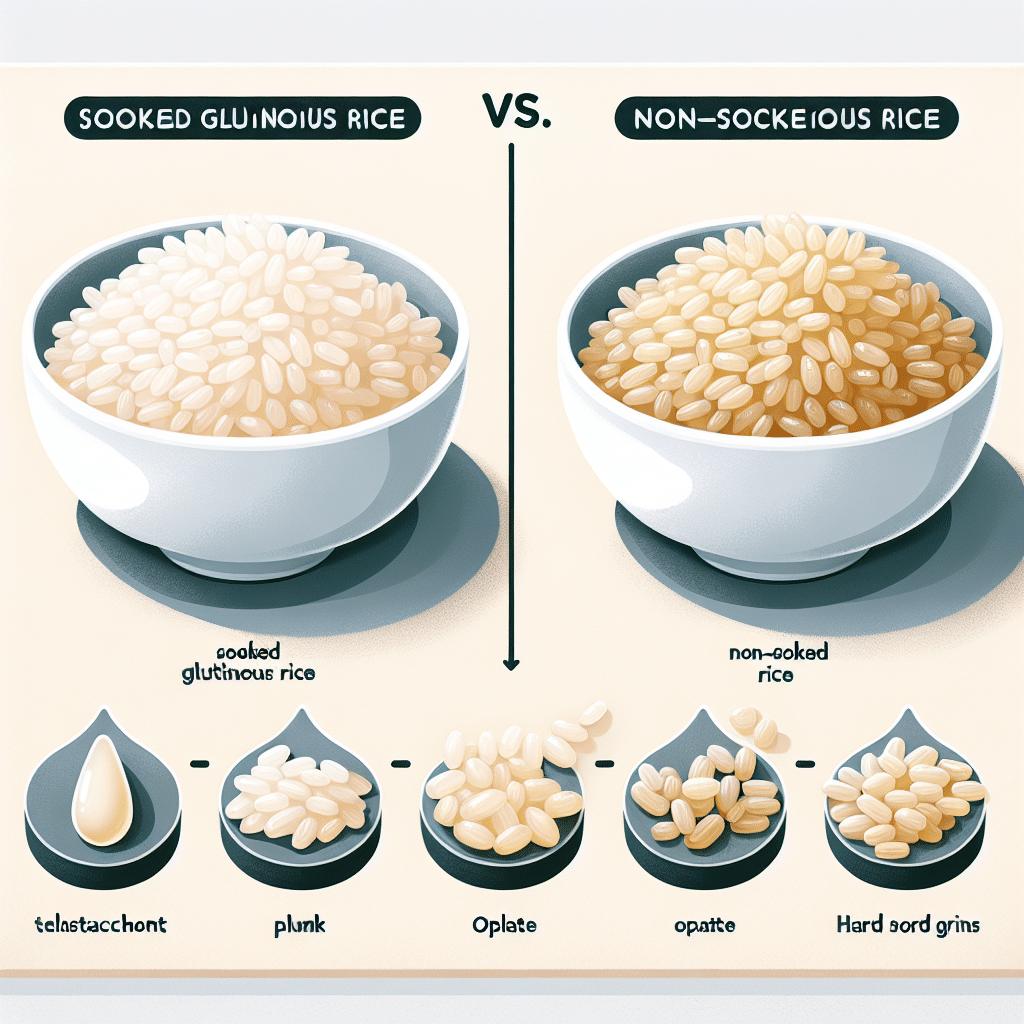
Glutinous rice, also known as sticky rice, is a staple in many Asian cuisines, known for its unique texture and the ability to stick together, making it a versatile ingredient for a variety of dishes. The traditional preparation of glutinous rice typically involves an essential step—soaking the rice before cooking. This article delves into what happens if you don’t soak glutinous rice, the science behind the soaking process, and the potential outcomes of skipping this crucial step.
Understanding Glutinous Rice
Before we explore the consequences of not soaking glutinous rice, it’s important to understand what sets this type of rice apart from others. Glutinous rice is characterized by its high amylopectin content, a type of starch that is responsible for the rice’s sticky texture when cooked. Unlike other types of rice that contain more amylose, which keeps grains separate and firm, glutinous rice becomes moist, tender, and clumps together easily.
The Traditional Soaking Process
Soaking glutinous rice is a time-honored practice that serves several purposes:
- It softens the grains, ensuring even cooking and the desired texture.
- It reduces cooking time, as soaked rice absorbs water and cooks faster.
- It activates enzymes that break down anti-nutrients, improving digestibility and nutrient availability.
Typically, glutinous rice is soaked anywhere from 2 hours to overnight, depending on the recipe and desired texture.
Skipping the Soak: Potential Outcomes
What happens if you decide to bypass the soaking step and head straight to cooking your glutinous rice? Here are some potential outcomes:
1. Hard and Unevenly Cooked Grains
Without soaking, the grains may not cook evenly, resulting in a mixture of hard, undercooked grains and softer ones. The desired sticky, uniform texture that is characteristic of dishes like sushi or Thai sticky rice will be difficult to achieve.
2. Longer Cooking Time
Soaking glutinous rice significantly reduces the cooking time. If you don’t soak the rice, you may find yourself needing to cook it for a longer period, which could lead to overcooking other ingredients in the dish or simply a longer wait before your meal is ready.
3. Digestive Issues
Soaking helps to break down anti-nutrients like phytic acid, which can bind to minerals and make them less available to your body. Skipping the soak might lead to digestive discomfort and reduced nutrient absorption.
4. Altered Taste and Texture
The texture of glutinous rice is a key component of its appeal. Without soaking, the rice may become too chewy or lack the softness that complements many Asian dishes. The taste could also be affected, as soaking can help to remove any residual bitterness or off-flavors.
Case Studies and Examples
Several studies have examined the effects of soaking rice. For instance, research published in the “International Journal of Food Science & Technology” found that soaking rice before cooking can affect the texture and sensory qualities of the final product. In culinary practice, chefs and home cooks alike have noted that dishes like Japanese mochi or Chinese zongzi require soaked glutinous rice to achieve the correct consistency and flavor profile.
Soaking Alternatives and Tips
If time is of the essence and you can’t soak your glutinous rice for the recommended period, there are a few alternatives and tips to consider:
- Use hot water to soak the rice for a shorter time, as warmer temperatures can speed up the water absorption process.
- Consider using a pressure cooker, which can help to soften the rice grains more quickly than traditional cooking methods.
- Experiment with pre-soaked or parboiled glutinous rice products that are available in some markets, designed to reduce preparation time.
Conclusion: The Importance of Soaking Glutinous Rice
In conclusion, while it may be tempting to skip the soaking step when preparing glutinous rice, doing so can lead to a subpar culinary experience. The traditional practice of soaking is not only rooted in achieving the perfect texture and flavor but also in ensuring that the rice is digestible and its nutrients are accessible. For the best results, it’s recommended to adhere to the soaking process as closely as possible.
Enhance Your Diet with ETprotein’s High-Quality Protein Products
After exploring the intricacies of preparing glutinous rice, why not consider incorporating high-quality protein into your diet? ETprotein offers a range of organic and allergen-free protein products that can complement your culinary ventures. Whether you’re looking to enrich your meals with additional protein or seeking ingredients for specialized dietary needs, ETprotein’s offerings are an excellent choice.
About ETprotein:
ETprotein, a reputable protein and L-(+)-Ergothioneine (EGT) Chinese factory manufacturer and supplier, is renowned for producing, stocking, exporting, and delivering the highest quality organic bulk vegan proteins and L-(+)-Ergothioneine. They include Organic rice protein, clear rice protein, pea protein, clear pea protein, watermelon seed protein, pumpkin seed protein, sunflower seed protein, mung bean protein, peanut protein, and L-(+)-Ergothioneine EGT Pharmaceutical grade, L-(+)-Ergothioneine EGT food grade, L-(+)-Ergothioneine EGT cosmetic grade, L-(+)-Ergothioneine EGT reference grade and L-(+)-Ergothioneine EGT standard. Their offerings, characterized by a neutral taste, non-GMO, allergen-free attributes, with L-(+)-Ergothioneine purity over 98%, 99%, cater to a diverse range of industries. They serve nutraceutical, pharmaceutical, cosmeceutical, veterinary, as well as food and beverage finished product distributors, traders, and manufacturers across Europe, USA, Canada, Australia, Thailand, Japan, Korea, Brazil, and Chile, among others.
ETprotein specialization includes exporting and delivering tailor-made protein powder and finished nutritional supplements. Their extensive product range covers sectors like Food and Beverage, Sports Nutrition, Weight Management, Dietary Supplements, Health and Wellness Products, and Infant Formula, ensuring comprehensive solutions to meet all your protein needs.
As a trusted company by leading global food and beverage brands and Fortune 500 companies, ETprotein reinforces China’s reputation in the global arena. For more information or to sample their products, please contact them and email sales(at)ETprotein.com today.

